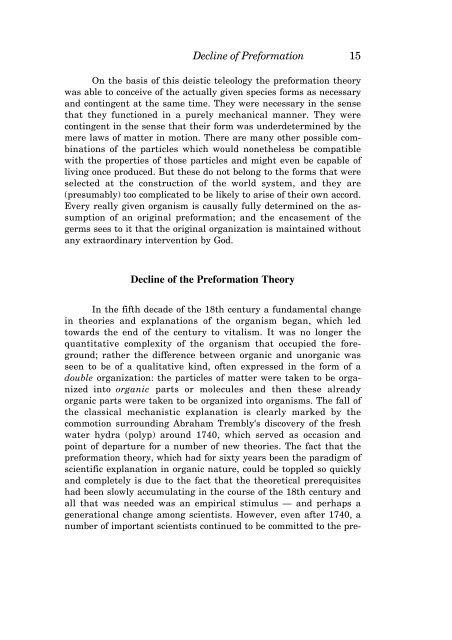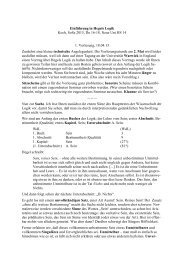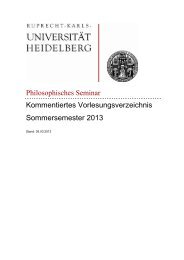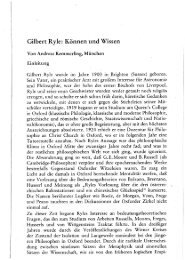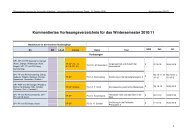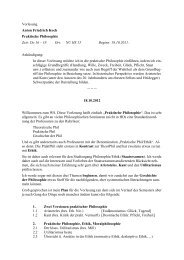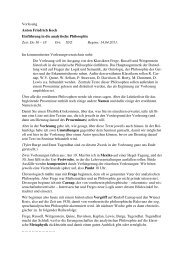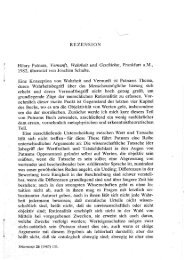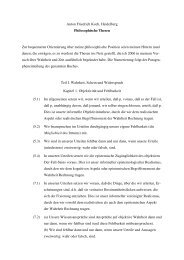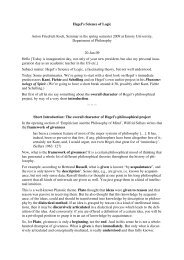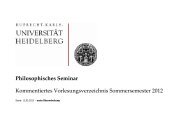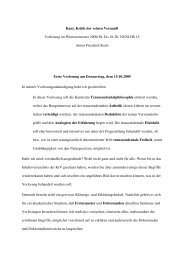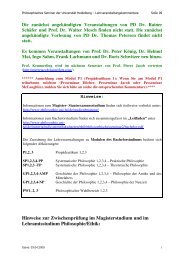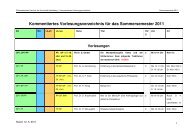KANT'S CRITIQUE OF TELEOLOGY IN BIOLOGICAL EXPLANATION
KANT'S CRITIQUE OF TELEOLOGY IN BIOLOGICAL EXPLANATION
KANT'S CRITIQUE OF TELEOLOGY IN BIOLOGICAL EXPLANATION
Create successful ePaper yourself
Turn your PDF publications into a flip-book with our unique Google optimized e-Paper software.
Decline of Preformation 15<br />
On the basis of this deistic teleology the preformation theory<br />
was able to conceive of the actually given species forms as necessary<br />
and contingent at the same time. They were necessary in the sense<br />
that they functioned in a purely mechanical manner. They were<br />
contingent in the sense that their form was underdetermined by the<br />
mere laws of matter in motion. There are many other possible combinations<br />
of the particles which would nonetheless be compatible<br />
with the properties of those particles and might even be capable of<br />
living once produced. But these do not belong to the forms that were<br />
selected at the construction of the world system, and they are<br />
(presumably) too complicated to be likely to arise of their own accord.<br />
Every really given organism is causally fully determined on the assumption<br />
of an original preformation; and the encasement of the<br />
germs sees to it that the original organization is maintained without<br />
any extraordinary intervention by God.<br />
Decline of the Preformation Theory<br />
In the fifth decade of the 18th century a fundamental change<br />
in theories and explanations of the organism began, which led<br />
towards the end of the century to vitalism. It was no longer the<br />
quantitative complexity of the organism that occupied the foreground;<br />
rather the difference between organic and unorganic was<br />
seen to be of a qualitative kind, often expressed in the form of a<br />
double organization: the particles of matter were taken to be organized<br />
into organic parts or molecules and then these already<br />
organic parts were taken to be organized into organisms. The fall of<br />
the classical mechanistic explanation is clearly marked by the<br />
commotion surrounding Abraham Trembly's discovery of the fresh<br />
water hydra (polyp) around 1740, which served as occasion and<br />
point of departure for a number of new theories. The fact that the<br />
preformation theory, which had for sixty years been the paradigm of<br />
scientific explanation in organic nature, could be toppled so quickly<br />
and completely is due to the fact that the theoretical prerequisites<br />
had been slowly accumulating in the course of the 18th century and<br />
all that was needed was an empirical stimulus — and perhaps a<br />
generational change among scientists. However, even after 1740, a<br />
number of important scientists continued to be committed to the pre-


